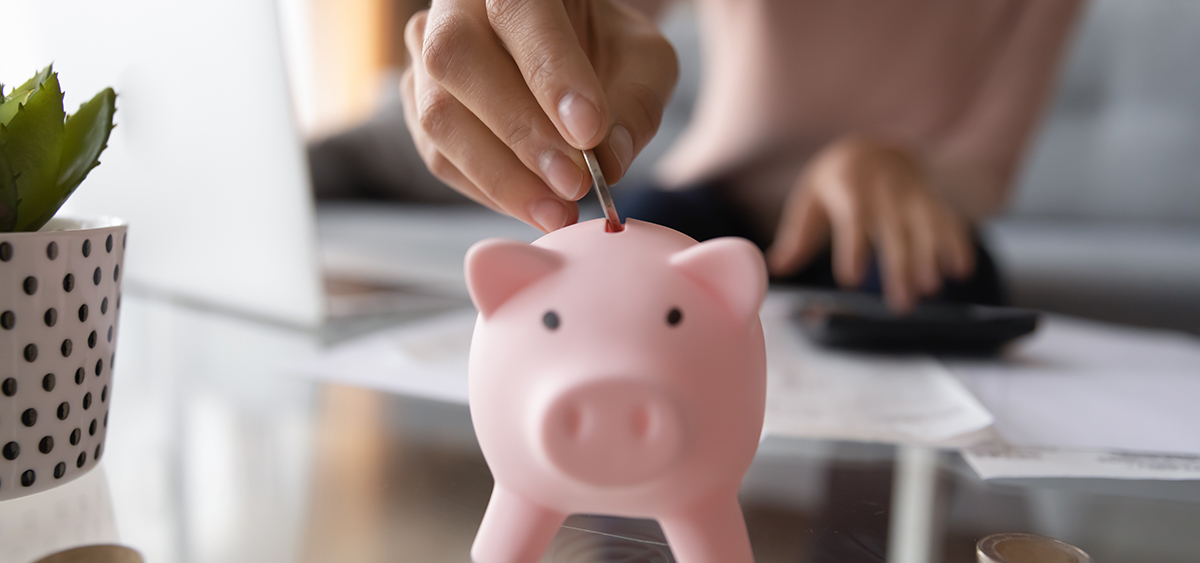Before giving you a mortgage, financial institutions usually require you to have a “down payment.” This is money you contribute toward the purchase. How big should your down payment be? What are your options for gathering a down payment?

How much?
Your down payment shows financial institutions that you’re serious about buying a home. Your down payment must be at least 5% of the purchase price if the purchase price is $500,000 or less.
You might have to give a bigger down payment if you’re buying rental property, if the property is worth more than $500,000, if you’re self-employed or if you have a bad credit record.
You might also have other expenses when buying a home. To learn more, see our article on expenses to pay when buying a home.
Many banks and other financial institutions offer a “pre-approval” service that lets you know the maximum amount you will be able to borrow, given the down payment you can provide. Check with your bank or other financial institution for more information.
In addition to the purchase cost, there are other expenses involved in buying a home. To learn more, see our article Buying a Home: Expenses.
Different ways to gather a down payment
To gather a down payment, you can
- use your own money,
- save through a First Home Savings Account (FHSA),
- take part in the Home Buyers’ Plan (HBP),
- get help from a family member,
- rent the property with an option to buy, or
- borrow money.
Using your own money
You might have enough savings to cover your down payment. The money can come from your bank account or investments. Keep in mind that there could be delays and penalties if you withdraw money from certain types of investments. To learn more, contact your investment broker, representative or adviser.
Save through a First Home Savings Account (FHSA)
A FHSA is a savings account which allows you, if you are a first-time home buyer, to save for the purchase of a first home without having to pay tax on the sums saved. You can contribute up to $8,000 per year, to a maximum of $40,000. This type of account is offered by banks, credit unions, certain insurance companies and investment firms.
To open a FHSA account, you must be a resident of Canada, and be between the ages of 18 and 71. You can withdraw and use the money from this account to buy or build different types of homes (house, condo, duplex apartment, etc.)
To avoid being taxed on the money withdrawn from the FHSA, you must respect certain conditions. First, you need to have a signed contract for the purchase or construction of a home before withdrawing the money. You must also take possession of the property at a certain time:
- At the earliest, 30 days before the withdrawal of the money,
- At the latest, on October 1st of the year following the withdrawal of the money.
You must also use the home as your principal residence no later than a year after buying or building the home.
The FHSA can remain open for 15 years. However, you must close the account in the year following the purchase of your first property.
Home Buyers’ Plan (HBP)
You can withdraw up to $60,000 from your Registered Retirement Savings Plan (RRSP) through the Home Buyers’ Plan (HBP). The advantage of the HBP is that the money you withdraw from your RRSP isn’t taxed. However, you must pay the money back into your RRSP over the next 15 years.
To qualify for the HBP, you must use the home as your principal residence no later than a year after buying or building the home, depending on the situation. This means you can’t use the HBP to buy a home to use as your secondary residence, or a home you’ll be renting out for more than a year.
If you want to withdraw funds from your RRSP, you must complete this government form: T1036 Home Buyers’ Plan (HBP) Request to Withdraw Funds from an RRSP (Canada Revenue Agency).
You must also make sure the funds are deposited in the RRSP account at least 90 days before you use this money for your down payment.
Contrary to the FHSA, there might be a delay between the time you submit the form and the time the funds are available. Contact your financial institution if you need more information.
Visit the Canada Revenue Agency website to learn more about the Home Buyers’ Plan: What Is the Home Buyers’ Plan (HBP)?
Help from a family member
You might have a family member who’s willing to give you money for your down payment.
Family members can also give their home as a guarantee to help you get a bigger mortgage. There are risks, however. For example, if you stop making your payments, the financial institution could ask your family member to pay in your place. The institution could even seize your family member’s home if they can’t pay!
A notary can help you draw up a document stating the conditions of the gift or the guarantee from your family member.
Renting the home with an option to buy
If the seller agrees, you can begin by renting the home. In this case you’ll need a clear agreement indicating that the rent you pay each month will go toward your down payment. You can contact notary or lawyer to help you draft this type of contract.
Borrowing money
You can apply for a personal loan or a personal line of credit and use this as your down payment. Some financial institutions don’t allow this, however, because one of the aims of a down payment is to demonstrate that you have the financial resources to buy a property.
You can also check with the city or municipality where you plan to buy. It might offer programs to help finance your purchase.





